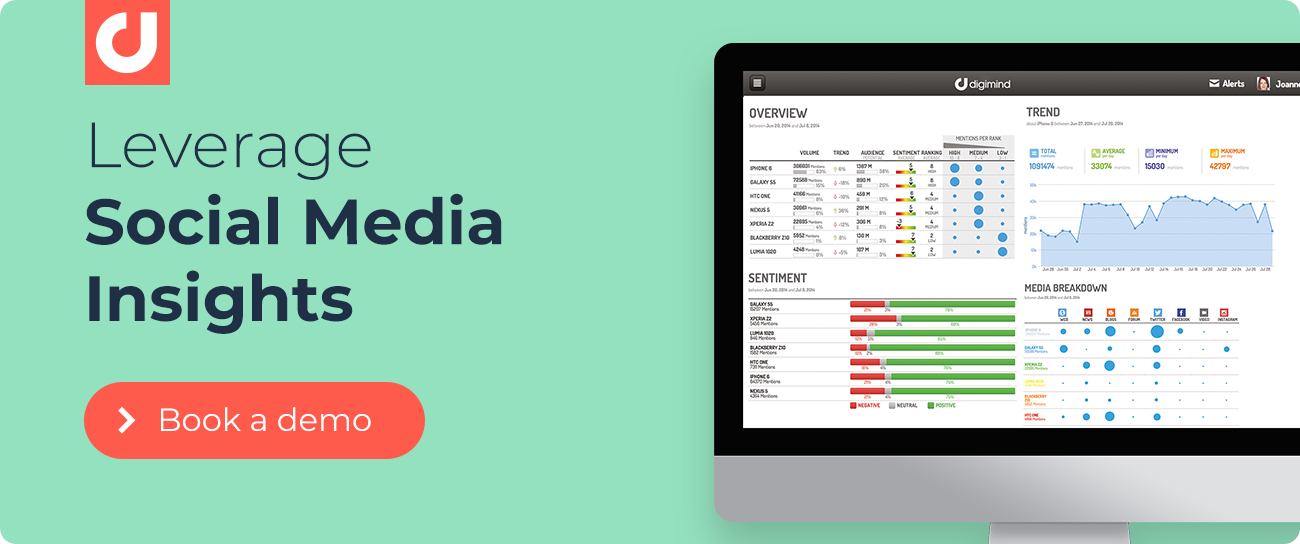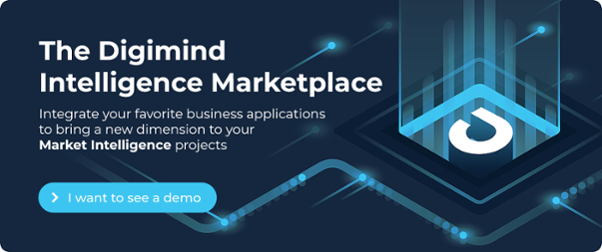The 4 Social Listening Methods For Building Your Leads Strategy
Summertime is upon us, and I don’t know about you fine folks, but I’m getting my suntan lotion and inflatable pool banana ready for the sunshine, the beach, and the tropical drinks. So so many tropical drinks. But before you and I set up our vacation email responses and close our laptops, we should probably get a few things out of the way, most importantly of course, our lead acquisition strategy! For the benefit of all you using social listening to for monitoring social media platforms like Facebook, Twitter, Instagram, and so on, for stronger consumer engagement, better insights, and stronger sales, it’s important to understand what leads are in the first place and why they’re vital for staying ahead of your competitors, improving your marketing campaigns, and drawing in new potential customers.
Generating leads is the process of discovering fresh opportunities for both target consumers, and also marketing opportunities. Leads themselves come in many shapes and sizes, but typically are either:
- Ideal customers that are potentially open to your brand’s services or products based on market research.
- Consumers that are typically aligned with a competitor’s brand, but are flippable given the right messaging and brand image.
- People who are completely removed from the industry your brand belongs to, and can be considered “new” leads due to the inherent opportunities that can arise from introducing them to the solutions that your brand’s products or services can provide.
- And lastly, “lost” leads that were once frequent loyal customers but who’ve fallen out or found another brand to attach their spending decisions to.
Good leads, big leads, small leads, rich leads, poor leads, strange leads, surprising leads, and lead leads, there’s just no such thing as a “bad” lead assuming you know how to use social monitoring and social media platforms to find the right ones. To be clear, potential customers and leads are two separate things. Potential customers are those that aren’t fully understood as leads, but can be analyzed and included through a social listening tool, like Digimind, to work into a lead that is worth setting up and exploring for something like a sales team. A lead is an already established individual or group of individuals that can be reached out to through engagement and direct marketing, and who’re most likely to be receptive to said marketing work.
When you’ve got leads then you’ve got opportunity, and opportunity breeds success, and success breeds pool-side lounging and drinking sea breezes out of a halved coconut shell… well they do for me, anyway. But how do you get leads? Well, you can start with:
1. Monitoring Your Brand’s Conversations: The Good Vs. The Bad
Social listening - as a method of acquiring accurate & actionable data - can provide pinpoint precision when it comes to the general sentiments surrounding a brand and its products or services. People often voice their opinions on social media (and on non-social platforms like blogs, review sites, forums, and so on) where the social monitoring can acquire large sets of information that are tied to conversation mentions, popular trends, and more. By shortlisting potential leads that mention the brand - via positive or even neutral sentiment-aligned messaging - a marketing team can effectively build a strong case for what kinds of leads to pursue. Tools like Campaign Analysis can be great means to undergo such a social listening effort, and Digimind can help marketing and insights professionals achieve their goals with:
- Positive sentiment analysis delivers on-point leads that are based off of mentions that speak highly and/or strongly of a particular brand.
- Negative sentiment analysis delivers on-point leads that are based… well, off of mentions that speak poorly and/or critically of a particular brand.
By using this method, in tandem with other processes that we will cover below, you can build a strong foundation for your leads strategy moving forward.
2. Monitor Competitor-Based Conversations: Know Your Competition
Broadly speaking, your industry is an ecosystem that is always in constant flux. Staying abreast of the various market adversaries that exist in said ecosystem is what will help you and your brand stay one step ahead of the competition, and thus able to more flexibly maneuver potential brand crises, change campaign directions to accommodate similar or threatening content, and better position your brand to potentially convert competing brand’s target consumers to your side. Though this is the second plug in the same article, it needs to be mentioned that Digimind’s advanced Competitive Intelligence tool provides users unparalleled insights into the other guys, and what’s being said about them. With access to a tool like this, your leads strategy becomes a whole lot easier, and 10x’s more achievable when it comes to both the positive and negative sentiments of your rival’s products and services. For example:
- Positive sentiments that are derived from a competitive monitoring effort can show you what the other companies are doing properly within your industry, thus offering an excellent opportunity for you to pursue similar tactics for potential new customers, or to try something radically different online in order to shake up the game - only because of the acquired data-backed insights, - successfully!
- Negative sentiments that are derived from a competitive monitoring effort can similarly show you what not to replicate with a marketing campaign, and what kinds of social content would make certain leads more receptive to your marketing efforts.
3. Monitoring Industry-Based Keywords: Listen To What They Say & How They Say It
Keyword Monitoring ties all the other methods together so that your overarching understanding of the marketplace is optimally situated to deliver the best returns when performing your outreach to new leads. Social Listening platforms, like Digimind (sorry, last plug we promise) can offer marketing and insights professionals a vast array of services that improve your search results for certain topics, subjects, and trends (both new and old-but-relevant) based on certain keywords. Imagine, again if you will, that you run the marketing team for a cell phone brand, and you want to know how best to develop content that’ll resonate and engage the most when delivered online. Lucky for you, you can segregate your searches once more by positive and negative sentiment for your keyword queries, thus ensuring that you’ll always have clear knowledge of which words work the best and work the least for your marketing purposes. Combined with all the other lead methods mentioned above that rely on social listening, and you’ve got yourself a pretty good place to start.
4. Monitor Influencers: Who To Keep An Eye On
Your Summer success is almost here - in fact I can smell the banana oil it’s that close, but before you claim victory and call it a day, you will need to understand one final crucial element of building an effective lead strategy, and that’s the use of Influencer Monitoring. Influencers are more than millennials and Gen-X/Zers lip-syncing their favorite songs while reviewing obscure make-up tips. Influencers are an integral part of the broader marketing ecosystem, and they should also be an integral part of your strategy to generate leads. Let’s say your business sold three kinds of ice cream: chocolate, vanilla, and strawberry. Sure that’s a silly business, but just roll with us here. An online personality could bolster your lead generation through engaging content, direct messaging, and growth networking. Obviously just Googling “the best ice cream influencers” won’t really cut it (or scoop it). Social Listening is the answer, and through it, you - as well as other marketing and insights professionals - can access a whole list of highly applicable influencers that would be the best fit for your brand and your brand’s products and services. In this case, you could find an influencer who espouses the virtues of vegan ice cream, a related subject for your brand because of your lineup of vegan chocolate, vanilla, and strawberry ice creams, as well as someone who targets a specific demographic or set of demographics that would relinquish the most lucrative results for your online engagement efforts. Out of all the methods of your lead generation strategy, this might be the most overlooked, but if you’re careful with your approach, there’s no denying you’ll see incredible results for potential customers who could turn into great leads.
Make your Lead Strategy Your Own
At the end of the day, these are simply frameworks to lean on when trying to build an effective strategy for lead generation. Only you know your target audience and potential new consumers best, and in case you don’t, there’s social listening - as we discussed - to help you close the gap of unknowns. With these four methods, you’ll have a good place to start with your work, and a solid position when you begin within your industry, for lead generation. Now if you excuse me, I need to find a long silly straw and tiny umbrella… my strawberry daiquiri is melting.

Written by Micah Levin
With a background in creative writing, advertising, and psychology, Micah is a copywriter in name and a Digiminder at heart. When he's not developing content for agencies, you can find him crafting novels, cooking and running around in Brooklyn, NY.
.png?width=100&name=logo%20(1).png)



